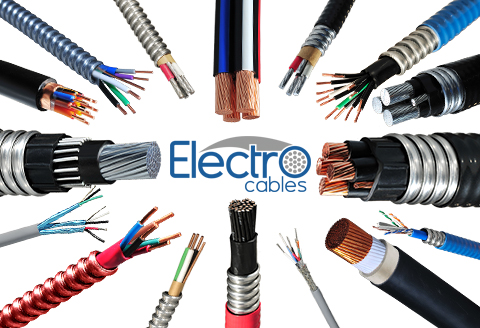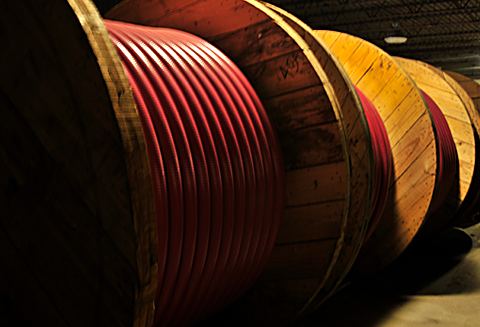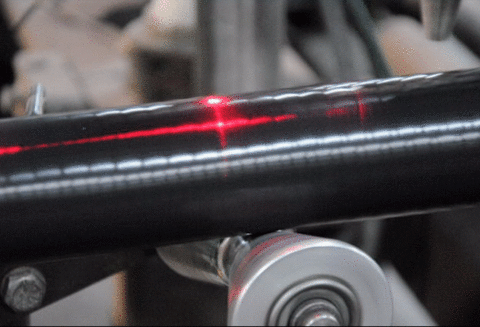A partner you can trust
Essential Guide to Understanding Twin and Earth Cable Specifications and Applications
In the ever-evolving landscape of electrical installations, understanding the specifications and applications of twin and earth cable is paramount for professionals in the industry. As reported by the National Electrical Manufacturers Association (NEMA), the demand for reliable wiring solutions is on the rise, driven by advancements in technology and increasing energy efficiency regulations.

Twin and earth cables, characterized by their robust construction and versatile applications, play a crucial role in both domestic and industrial electrical systems. According to IEC standards, these cables effectively support low-voltage power distribution and are essential for ensuring safe and efficient electrical connections. This essential guide aims to illuminate the nuances of twin and earth cable specifications, empowering electricians, engineers, and contractors to make informed decisions that enhance safety and performance in their projects.
Understanding the Key Specifications of Twin and Earth Cables for Electrical Installations
When it comes to electrical installations, understanding the specifications of Twin and Earth cables is crucial for ensuring safety and efficiency. Twin and Earth cables consist of two insulated conductors (the 'twin') and a bare earth conductor, which together provide a reliable method for wiring in residential and commercial settings. The insulation materials and cable dimensions play a significant role in determining the cable's current-carrying capacity, voltage drop, and overall performance in various applications.

One of the key specifications to consider is the cross-sectional area of the conductors, typically measured in square millimeters (mm²). This specification directly influences the load the cable can handle and is critical when sizing cables for specific electrical loads. Additionally, the type of insulation—often PVC or low smoke zero halogen (LSZH)—affects the cable's fire resistance and suitability for different environments. Understanding these specifications helps electricians choose the right cable type for safety and regulatory compliance, whether for indoor wiring, lighting, or sub-main circuits.
The Role of Conductor Material in Twin and Earth Cable Performance
When it comes to the performance of Twin and Earth cables, the role of conductor material is pivotal. Typically made from copper or aluminum, the conductor’s properties directly affect the cable’s conductivity, flexibility, and overall efficiency. Copper, known for its superior conductivity and resistance to corrosion, is often the preferred choice for domestic electrical installations. On the other hand, aluminum, while being a lighter and more cost-effective alternative, may require larger diameters to achieve the same electrical performance as copper.
**Tip:** When selecting Twin and Earth cables, consider the specific application requirements. For residential wiring, copper is generally recommended due to its enhanced performance. However, for larger installations where weight and cost are critical factors, aluminum may be more suitable.
The insulation surrounding the conductors also plays a significant role in cable performance. Different materials, such as PVC or XLPE, offer varying levels of protection against environmental factors. This can impact not only the longevity but also the safety of the installation. Ensuring the right combination of conductor material and insulation can lead to improved performance and reliability.
**Tip:** Always check for compliance with industry standards, as this ensures the cable can withstand the conditions it will be subjected to over time, minimizing the risk of failures and enhancing safety.
Essential Guide to Understanding Twin and Earth Cable Specifications and Applications - The Role of Conductor Material in Twin and Earth Cable Performance
| Specification | Description | Conductor Material | Standard Voltage Rating | Typical Applications |
|---|---|---|---|---|
| Twin and Earth 1.5mm² | Commonly used for lighting circuits | Copper | 300/500V | Residential lighting |
| Twin and Earth 2.5mm² | Used for socket outlets and power circuits | Copper | 300/500V | General power distribution |
| Twin and Earth 4mm² | Suitable for high power circuits such as showers | Copper | 300/500V | Heavy-duty applications |
| Twin and Earth 6mm² | Ideal for equipment requiring higher current | Copper | 300/500V | Industrial equipment, heating |
| Twin and Earth 10mm² | Designed for high-demand installations | Copper | 300/500V | Power distribution for larger systems |
Importance of Cable Core Size and Its Impact on Electrical Load Capacity
When selecting Twin and Earth cables, understanding the core size is crucial as it directly impacts the electrical load capacity and overall performance of the installation.
A larger cable core size typically allows for higher current carrying capacity, which is vital in meeting the demands of various electrical applications. This is especially relevant in situations where power cables are exposed to environmental stresses such as solar radiation.
Notably, cables that are not adequately sized may suffer from rapid degradation when exposed to harsh conditions, leading to increased maintenance costs and potential safety hazards.
Ampacity, or the maximum amount of electric current a conductor or device can carry before sustaining immediate or progressive deterioration, is another critical consideration.
In typical installation environments, the temperature field around three-core cables can significantly impact their performance. Ensuring the right temperature management and cabling specifications means taking both the ambient conditions and the cable's load into account, ultimately contributing to the longevity and efficiency of the electrical system.
Properly assessing these parameters not only optimizes performance but also enhances safety in electrical installations.
Evaluating Insulation Types and Their Resistance to Environmental Factors
When it comes to selecting twin and earth cables, understanding the various insulation types is crucial. The insulation material directly affects the cable's durability and its ability to withstand environmental factors. Common insulation options include PVC, XLPE, and rubber, each offering different levels of resistance to heat, moisture, and abrasion. PVC is a popular choice due to its cost-effectiveness, though it may not perform well in extreme temperatures. On the other hand, XLPE provides superior resistance to heat and chemicals, making it ideal for industrial applications.
**Tips:** When choosing insulation types, consider the specific environmental conditions the cable will face. For outdoor installations, opt for materials like XLPE that offer additional UV resistance. Additionally, always check the temperature rating of the insulation; a higher rating can ensure better performance over time, especially in fluctuating conditions.
Furthermore, understanding the cable's application is essential. For instance, in wet areas, cables with enhanced moisture resistance should be prioritized to prevent degradation. Always assess the installation environment thoroughly, as the right choice of insulation can greatly extend the lifespan of your wiring and ensure safety.
**Tips:** Regularly inspect cable insulation for signs of wear or damage, especially in high-traffic or harsh environments. Proper installation practices, including securing cables away from sharp edges or excessive heat sources, also contribute significantly to their longevity.
Essential Guide to Understanding Twin and Earth Cable Specifications and Applications
This chart illustrates the resistance of various insulation types used in Twin and Earth cables to environmental factors. The data indicates that PVC insulation has a higher resistance compared to XLPE, while rubber insulation shows the highest resistance among the types analyzed.
Common Applications of Twin and Earth Cables in Residential and Commercial Projects
Twin and Earth (T&E) cables are a prevalent choice in both residential and commercial electrical installations due to their versatility and durability. These cables typically consist of two insulated conductors and a bare earth wire, making them ideal for fixed wiring applications. According to the UK’s National Inspection Council for Electrical Installation Contracting (NICEIC), T&E cables are commonly used for lighting and power circuits, providing an effective solution for up to 30 amps of current, which is suitable for most household appliances and lighting systems.
In commercial projects, T&E cables excel in a variety of applications. They are often utilized in traditional wiring systems, such as for wall-mounted sockets and lighting fixtures. A report by the Electrical Safety Council indicated that T&E cables account for approximately 70% of all wiring installations in commercial buildings in the UK. This prevalence highlights their reliability and compliance with safety standards, making them an indispensable choice for contractors. Furthermore, T&E cables are rated for both indoor and outdoor use, with UV-resistant options available, ensuring that they can handle a wide range of environmental conditions.

Related Posts
-

The Ultimate Guide to Choosing the Right Outdoor Electrical Cable for Your Needs
-

The Ultimate Guide to Sourcing the Best Wire and Cable Products for Your Business
-

10 Essential Tips for Sourcing Electric Cables Effectively in 2023
-

7 Reasons Why Shielded Power Cables Enhance Electrical Safety and Efficiency
-

Advantages of Choosing High Quality Electric Cable for Your Projects
-

Top Strategies for Sourcing Shielded Power Cable in Global Markets

Products
Products
LEARN MORE
Current Inventory
Current Inventory
LEARN MORE
Custom Solutions
Custom Solutions
WE CAN HELPLighting Power & Control-Signal Cable
This content is restricted to site members. If you are an existing user, please log in. New users may register … LEARN MORE “Lighting Power & Control-Signal Cable”
LOOKING
FOR HELP?
We are here to help. You can contact us or create an account online to have access to special products, technical specifications and our new online quote tool.
ELECTRO CABLES
9 Riverside Drive
P.O. Box 276
Trenton, Ontario
CANADA K8V 5R5
N.A. Toll Free: 888-ELECTRO
(1-888-353-2876)
World: 613-394-4896
Fax: 613-394-4101
Email: sale@machinecables.com
We manufacture cables that are certified by the Canadian Standards Association (CSA), listed by Underwriters Laboratories and/or listed by Intertek (ETL).
Our quality management system is registered to ISO 9001: 2015. Our team is dedicated to consistently providing quality service and products to our customers.

© 2025 ELECTRO CABLES • SITE BY SNAP 360•
